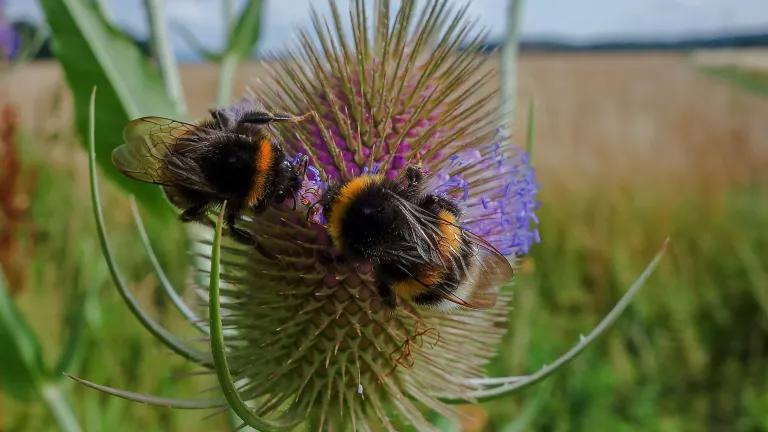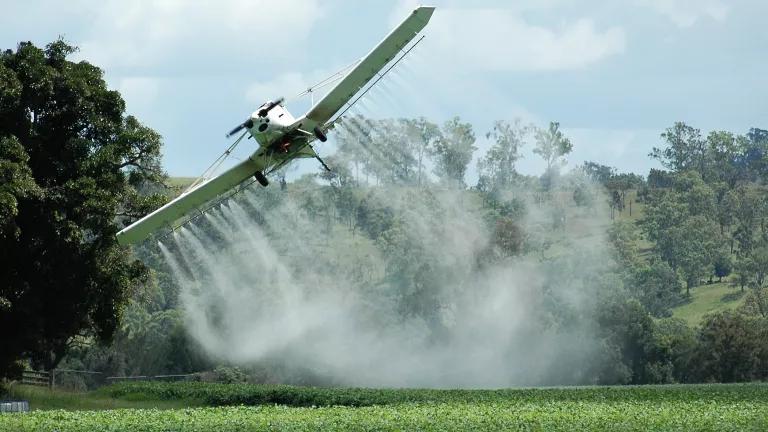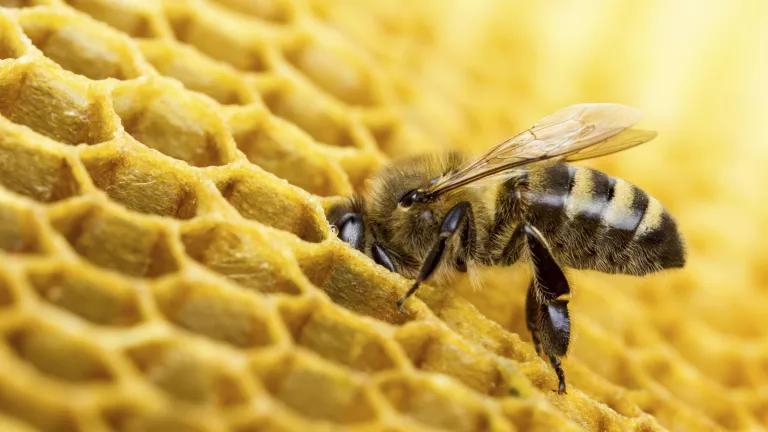Vermont Becomes Second State to Take Big Steps for Bees
The Vermont legislature enacted a bill curbing the use of bee-toxic neonic pesticides on the first day of Pollinator Week.

In a timely gift to its bees, butterflies, birds statewide, the Vermont legislature overrode Gov. Phil Scott’s veto yesterday to enact H.706 into law. The new law makes Vermont the second in the country, following New York, to restrict the largest uses of neonicotinoid or “neonic” pesticides—the bee-killing pesticides that may also be some of the most ecologically destructive since DDT.
The vote marks a meaningful start by Vermont’s leaders to Pollinator Week—the national week-long celebration that is too often filled with empty praise of our critical pollinating species, but little action to protect their disappearing populations. Although recent headlines imply bee populations are doing just fine, the pollinator crisis is as severe as ever, with serious risks to our food and ecosystems.
Many factors drive this crisis, but chief among them are the highly potent neonic pesticides, which have made U.S. agriculture nearly 50-times more toxic to insect life since their introduction. In turn, that toxicity has largely been driven by just one use—neonic coatings applied to corn, soybean, and other field crops seeds before planting.
While hailed as “targeted” pesticide use, the vast use of these coatings is unprecedented. For example, neonics now coat nearly every conventional corn seed planted nationwide—covering over 90 million acres—with each seed coating containing enough active ingredient to kill a quarter million bees.
Worse yet, in most cases, 95+% of the pesticide coating leaches off into the environment to contaminate soil, water, plant life, and wildlife on a broad scale. The result has been hollowed out ecosystems, polluted water, and threats to human health.
The new Vermont law cuts to the heart of the problem by adopting New York’s commonsense model for reducing neonic use. Both laws recognize extensive scientific research showing a simple fact: aside from being destructive, these seed coatings fail to produce economic benefits for farmers in the vast majority of cases. That’s because they’re applied to seeds prophylactically—largely treating for pest problems that don’t exist.
The solution is simple, instead of banning these seed coatings, the new law requires only that farmers get a “prescription” from their agronomist demonstrating the coatings are needed in order to address a valid pest problem. While seemingly a small step, a similar program implemented in Canada has been revolutionary—driving neonic seed coating use on field crops to nearly 0% with no evidence of related crop loss or switching to more harmful uses.
The law also contains other commonsense measures for reducing neonic use, taking its cues from other jurisdictions. And while neonics have been largely phased out in other areas like Europe and Canada, the law puts the Green Mountain State at the vanguard of curbing needless neonic use here in the U.S.
So this Pollinator Week, lets hear it not only for the bees, but for the great state of Vermont!



